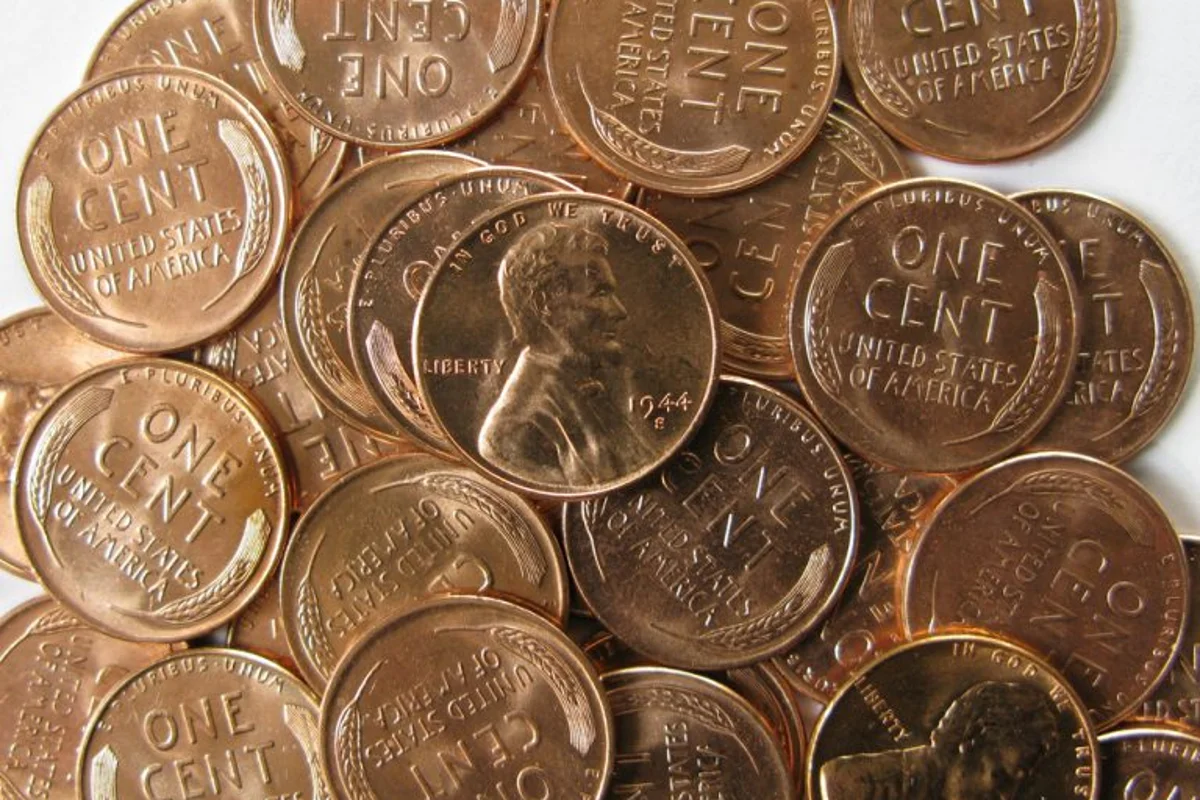By Sarah Edwards
Copyright benzinga

For millions of collectors and investors, some coins just make sense to hold on to. The Lincoln wheat penny is one of them.
While it might not be the world’s most collected coin, it’s still one of the most popular. The significant period in American history when it was produced gives the Lincoln wheat penny value that’s recognized around the world. In fact, some of the most rare pennies can be worth $150,000 or more.
If you’re just starting a coin collection or planning to sort through your stash of loose change, it’s a good idea to learn about the history and value of the Lincoln wheat penny so you know what to watch for as you collect and sort.
Value of the Lincoln Wheat Penny
How much a Lincoln wheat penny is worth can vary widely, from five cents to a few dollars for worn coins with common dates, all the way up to values in the hundreds and thousands of dollars for rare versions.
If you run across one, consider that it may be worth more than just one cent and that the value of coins changes regularly. New varieties may be found, or its market price may fluctuate as coins are bought and sold by collectors.
The Lincoln wheat penny is beloved for its iconic design. It appeals to multiple levels of coin collectors, from hobbyists looking to complete a set to enthusiasts seeking rare, high-value versions.
Most Lincoln wheat pennies in circulation are worth just $.05 to $0.50. In better condition, some may be worth $5 to $50, while rare, high-grade coins might fetch more than $100,000.
Do you think the Lincoln cent in your drawer or jar might be worth more than $0.05 or a few dollars? If the coin is in excellent condition, consider submitting it to the Numismatic Guaranty Company (NGC) or the Professional Coin Grading Service.
What Makes the Lincoln Wheat Penny So Valuable?
History and culture give the Lincoln wheat penny value. Many coin collectors pursue it because of its design: It was the first coin to feature the likeness of a U.S. president.
Produced from 1909 through 1958, this version of the one-cent coin had a long production run, supplying a wide sampling of variations for collectors to pursue. Four main factors contribute to a Lincoln wheat penny’s value:
Date: The year the coin was minted.Mint mark: Where the penny was minted (no mint mark for Philadelphia, a D for Denver or an S for San Francisco).Condition: A worn, circulated coin is worth less than one that is mint-state and uncirculated.Mint errors: Production errors, such as double dies, off-center strikes or the wrong planchet, can increase the value of Lincoln wheat pennies.
The range of the series allows collectors of all levels to find key dates, error coins and high-grade pennies. Keep in mind that when it comes to the Lincoln wheat penny value, billions of the coins were produced in its 49-year run.
History of the Lincoln Wheat Penny
The Lincoln wheat penny was minted in 1909 to honor the 100th anniversary of Abraham Lincoln’s birthday. President Theodore Roosevelt selected Victor David Brenner, a Lithuanian immigrant and medalist, to design the coin.
The coin presented Lincoln’s head facing right on the obverse and two stalks of wheat on the back. It was minted from 1909 through 1958, replacing the Indian head penny. The portrait of Lincoln became the first image of a president to appear on a coin circulating in the U.S.
Brenner’s initial design included his full name, and the U.S. Mint rejected it. He then placed his initials, VDB, at the bottom of the back of the penny, which was minted before controversy forced their removal. This short-lived mintage gave rise to the rare Lincoln wheat penny value of the 1909-S VDB, which could be worth over $150,000 in top condition.
The U.S. Mint added Brenner’s initials back to the coin in 1918, but smaller and near Lincoln’s shoulder on the obverse side.
Other Wheat Pennies Worth Considering
If you’re like most people, you have pennies sitting around somewhere. Among them may be a Lincoln wheat penny or two. Of course, the odds are that they’ll be worth slightly more than their face value, but they could be worth a few bucks, a couple Benjamins or perhaps even a thousand or more dollars.
Here are a few notable Lincoln wheat pennies to watch for:
1909-S VDB: The first Lincoln wheat penny, which was struck and subsequently discontinued1922 no D: The Denver Mint mark is missing, making this penny rare.1914-D: A rare and key date with a low mintage of about 1.1 million from the Denver Mint.1931-S: The second-lowest mintage, produced in San Francisco during the Great Depression.1955 Double Die Obverse: This scarce coin displays doubling of the date and lettering.1943 Copper Cent: Copper planchets that should have been removed for the war effort were struck, creating these rare coins.1944 Steel Cent: The 1944 wheat penny value is high if it is steel. Mistakenly struck on steel leftover from 1943, just around 50 of these coins are known to exist.
Keep in mind that certain dates are more valuable than others. Look for the appropriate mint marks, check for doubled letters or off-center strikes, and inspect the wear and tear. The finer the condition, the higher the potential value.
Watch for Lincoln Wheat Penny Value in Your Loose Change
Whether you’re clearing the loose change from your cupholder, sorting pennies from the jar in the kitchen cabinet or inspecting an inherited coin collection, keep your eyes peeled for potentially valuable Lincoln wheat pennies. You just might stumble across the next big find of the popular U.S. coin.
Frequently Asked Questions



